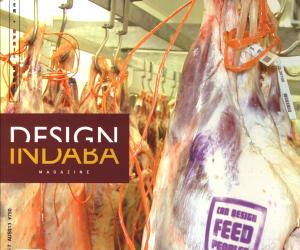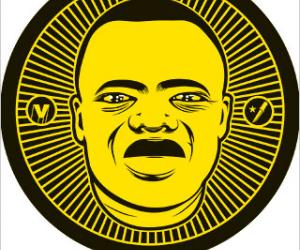First Published in

It’s hard to talk about Afrikaans culture without talking about politics and history. It’s even harder to be Afrikaans without being aware of the blood river of politics and history coursing through your veins. Afrikaans, as a cultural identity in the here-and-now of the new millennium South Africa, seems strangely and inexplicably inter-linked to the post prefix. Post-apartheid, post-nationalism, post-FW, post-die plaas, post-die NG kerk, post-safari suits (unless you’re some hip drum’n’bass kid and wear them with large doses of extreme irony), maybe even post-Afrikaans?
So where does one begin an exploration of Afrikaans interiors? By looking back at the classic plaas-huis? The plush Africa-meets-decadent-colonial style of the Cape Dutch home? In the kitsch doekies and doosies overkill of the Tretchikoff interior dream? Culturally interesting, sure, but not terribly relevant. It soon begins to emerge that maybe we get bogged down in the ideas, cultural signifiers and the weight of history instead of just looking at the damn interiors.
The thing, perhaps, is to settle down and let your eye rest a while to see beyond the historical connotations and denotations and start to acknowledge the things on the ground. You know, the everyday objects and spaces, the details and the gaps between them. You might even start to consider what lies beyond the façade. The message underneath the medium, the symbolism underlying the style, the meaning of a plate, a chair, a doormat…
With this in mind, we slipped into three young, urban, artistic Afrikaans homes, had a koppie koffie, talked kak and ogled walls, halls, furniture and art collections in search of the new Afrikaans aesthetic sensibility. Several cups of Koffiehuis (hey, we were going for authenticity) later, a narrative began to emerge. The furniture, arts, objects and styles that this young versameling employ in their homes are one instance of an increasingly visible process in which essentialist notions of Afrikaans identity are being challenged, fragmented and reinvented. Working from within the familiarity of their Afrikaans background and at the same time messing with it, they question the many rituals and roles and aesthetics that their lineage has bestowed - without ever rejecting their heritage.
Retro
These homes all carry a distinct sense of history. Not in the dusty text book sense but rather as a tongue-in-cheek, unashamedly kitsch, daringly bold and flagrantly frivolous reinvention of the past. Subtly blending nostalgia with large dollops of irony and a splattering of good clean old-fashion fun, objects that might have originally had historical weight are revisited through a playful filter that voids the original meaning. Conrad’s home has its very own fascist corner complete with Verwoerd lamp and a plate carrying Cecil John’s Rhode’s image. Peet’s plethora of sporting trophies are repainted, messed with and emasculated, while a rugby jersey is transformed into a bathmat (according to Peet because it is absorbent, but we think he has a more mischievous intention in mind.) In Heidi’s home, the collection of koek blikke, art deco doo-dats and seventies furniture that recall typical Afrikaans culture are face lifted with pop meets stylistics.
Collage
Using a collage aesthetic not unlike the one strategically employed in post-punk fashion, music, and graphic design in the late seventies, our young Afrikaners are also inclined to randomly mix and juxtapose objects. An old painting shares the wall with a modern work that calls into question its very aesthetics and meanings. Cartoon imagery is juxtaposed against African iconography. Old furniture bounces against pop painted walls. In Peet and Conrad’s homes, much of the inherent humour comes from a mix of referencing political art and everyday objects and junk. A single unaltered image is over-laid with a text banner or another image which instantly transforms one's interpretation of the image.
Decontextualisation
The obsessive use of collage and the unusual placement of objects in the homes results in objects losing their normal frame of reference. Books become a doorstop, a TV becomes a case for glasses, a doormat finds its way onto a chair. In this wild mish-mash of things, new meanings proliferate and the very idea of one stable history is deconstructed.
Humour
Like the dadaist vandalised Mona Lisa of L.H.O.O.Q.(1919) or the hat rack fastened to the floor for Trap (1917), the new young Afrikaans interior is ultimately more than tongue-in-cheek political, a-historical or ironic; it’s down right playful and even funny. Take the absurdity of Conrad’s dog and shark heads protruding from his walls or the nudge-nudge-wink-wink nature of the old battery advertisement that floats above Heidi and Gareth’s hi-fi, or Peet’s wittily quilted larger than life muscle men wall hangings. All these images ultimately conspire to create interiors than are more than just designs; they are theatrical backdrops for a cultural performance. All very post-modern? Nope, post-nothing. These homes are testimony to a vital, revolutionary and inspiring new generation that are defining our perception of Afrikaans culture. Bevok!
Story by Heidi Pietersen, Stacy Hardy and Peet Pienaar.
Text by Stacy Hardy.
Photographs by Heidi Pietersen and Gareth Chisholm.







